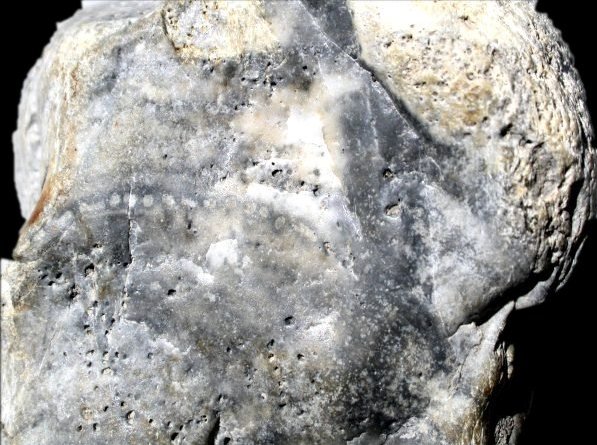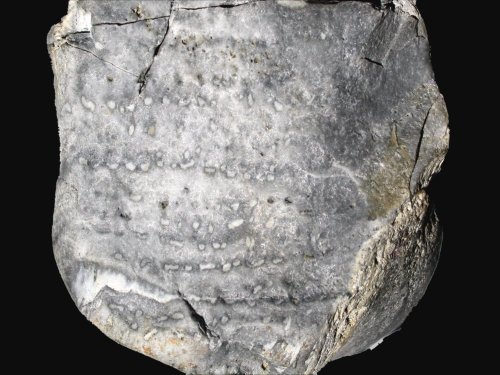
Click on the photo for enlargement.
A piece of Prototaxites from the river IJssel in the Netherlands shows row of spots going parallel to the concentric rings. Two of the other sides of the specimen also show these spot rows. On one side the skeletal hyphae are visible. This is exceptional because they are hardly ever preserved in Prototaxites from the rivers IJssel or Rhine.
The palaeobotanical department of the Wilhelms University in Münster has collected nearly identical specimens on the Isle of Spitsbergen. The only differenence is that the spots in the fossils from Spitsbergen are dark, whereas those of the IJssel specimens are coloured light. In one of the spots from the IJssel specimen skeletal hyphae are visible. Outside the spot they do not occur. This could be an indication that the structures outside the spots have been destroyed by the silification whereas they have been preserved inside the spots. In this case the spots would be the area's which kept intact untill the end.
The discussion about this matter will not be finished with this.
Coll. Hans van Essen, Dieren
